The posterior, or rear, delts don’t appear to get much love amongst gymgoers. They’re often trained as an afterthought, with a number of sets of rear delt raises thrown in at the top of a grueling shoulder pressing and side raise session to hit the more showy front and side delts.
Yet, you won’t ever get a very impressive upper body unless you give the rear delts the eye they deserve. This muscle completes the rounded cap of your delts and ties into your traps and lats. Guys who ignore it look much narrower and thinner than those who do it justice.
But to grow impressive rear delts, you need to do the appropriate exercises the appropriate way. In this text, I’ll lay out the three best exercises (spoiler: Rear delt cable fly, lying supine cable crossover, and bent over one arm cable rear delt raise) for the rear delts, explaining the physics of why they’re all you wish and putting them together right into a workout that works.
The Best Rear Delt Exercise: Rear Delt Cable Fly
The most effective rear delt exercise can have you holding resistance in each hand together with your hands together in front of your scapula. You then move your arms down and back in an upside-down ‘V’ motion, ending together with your hands out to the perimeters of your waist.
The most effective exercise to try this is the cable rear delt fly.
You will want a double pulley machine to perform the rear delt cable fly. In the event you only have access to a single pulley machine, you’ll be able to do the exercise on it one side at a time.
Step-by-Step
- Set the pulleys on a double pulley cable machine to their highest setting. Remove the handles from the ends of the cables.
- Stand facing the machine about three feet in front of it and grab the ends of the cable crossover so your right hand is holding the left cable and vice versa.
- Within the starting position, your hands needs to be crossed over at the extent of your sternum.
- Extend your arms down and barely back in an upside-down ‘V’ motion until fully prolonged to the perimeters of your waist.
- Contract your rear delts on this position.
- Return to the beginning position under control. Don’t bring your hands higher than your sternum.
It needs to be noted that the rear deltoids are a comparatively small muscle. In consequence, it doesn’t need plenty of weight to be maximally stimulated. I like to recommend using only a single plate on the pin weight stack to your first set and adjusting from there. I take advantage of fractional plates that could be added to the load stack to get the appropriate weight for the variety of reps I’m doing.
The Second Best Rear Delt Exercise: Lying Supine Cable Crossover
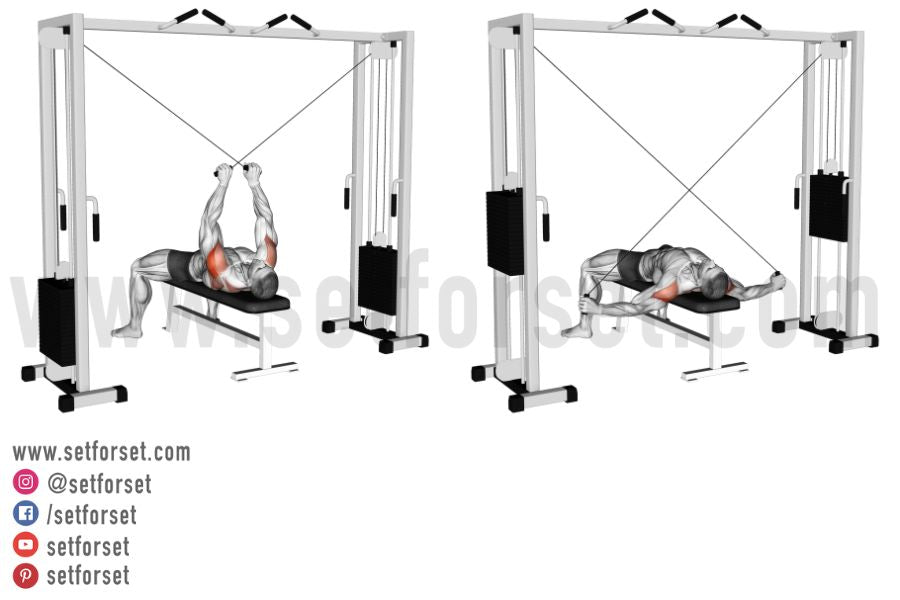
The lying supine cable crossover is comparable to the previous exercise, except it involves lying on a bench placed in the midst of the cable crossover machine. This makes for a stricter exercise, as you can not use back-swing to introduce momentum to the movement. It also reduces strain on the lower back. This could be a tricky exercise to tug off in a crowded gym, so I’ve also provided some alternate exercises further down within the article.
Step-by-Step
- Place a flat bench in the middle of the cable crossover machine. Set the pulleys at your shoulder level when standing.
- Grab the alternative cable handles and lie on the bench.
- Within the starting position, your arms needs to be prolonged directly above your chest together with your hands together.
- Bring your arms down and out without bending your elbows.
- In the underside position, your hands needs to be in step with your ribcage.
- Return to the beginning position under control.
The Third Best Rear Delt Exercise: Bent Over One Arm Cable Rear Delt Raise
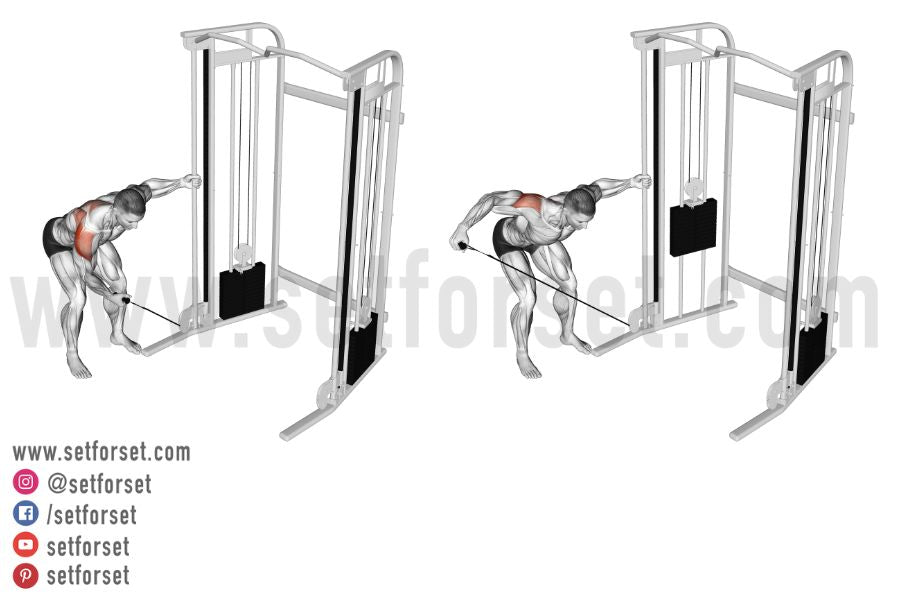
The bent-over-one-arm cable rear delt raise lets you concentrate on either side of the rear delts. Though the motion is opposite to the previous two exercises, with the arm coming up diagonally, it still follows the perfect angle of resistance since the cable pulley is ready low.
Step-by-Step
- Set the pulley on a cable pulley machine to its lowest position.
- Stand side-on to the machine, a few foot away from it.
- Bend over so your torso is parallel to the ground.
- Grab the cable together with your outside arm.
- In the beginning position, your outside arm needs to be reaching across in order that it’s just in front of your opposite shin.
- Pivot from the shoulder joint to increase your arm back and barely outward in a diagonal motion.
- Lower under control and repeat.
Rear Delt Anatomy
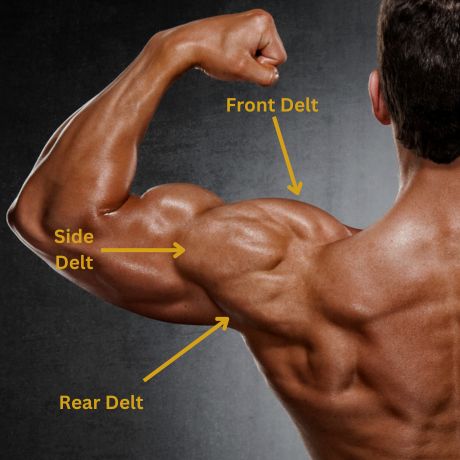
The rear delt muscle originates on the upper ridge of the scapula and inserts at the highest of the upper arm (humerus), right behind the insertion of the lateral delts. The muscle’s essential job is to tug the upper arm back and down. It also assists within the external rotation of the upper arm.
The rear delt muscle fibers run diagonally from the origin to the insertion point. The perfect exercise for this muscle will simulate this muscle fiber direction. That direction causes the upper arm to maneuver down and back if you end up in a standing position. In the highest position, your hands can be together at sternum level; in the underside position, they might be prolonged to your sides at waist level. The arm movement can be down and barely back.
That will not be what you see with most conventional rear delt exercises. As a substitute, they emphasize having the arms either coming up from a low position, as within the rear delt raise, or perpendicular to the body, as on the rear delt machine. Those movements don’t can help you perform the natural motion of the rear delts through its full range of motion, which is to increase the upper arms down and back in a diagonal sweeping motion.
Why The Cable Pulley is Best for Rear Delts
We’ve got established that the perfect exercises to focus on the rear delts will involve a direction of resistance that aligns with the direction of movement of the muscle in its natural function. It also needs to align with the direction of the muscle fibers. In each case, that direction is diagonally down.
While you use a free weight, comparable to a dumbbell or a barbell, the direction of resistance is simply ever straight down, in accordance with gravity. So, there isn’t any way you’ll be able to effectively work your rear delts with free weights.
While you use a cable pulley machine, nevertheless, you’re in a position to set the direction of cable resistance. By setting the pulleys at their highest position after which grabbing the alternative cable ends in order that your left hand is grabbing the appropriate cable and your right hand is holding the left cable, you’re in a position to create resistance through the perfect downward diagonal range of motion.
We love the cable machine for rear delts a lot that we dedicated a whole article to the Best Cable Rear Delt Exercises.
Rear Deltoid Workout
I like to recommend working your posterior deltoids along together with your front and side delts. Each of those three segments of your deltoid is a comparatively small muscle, in order that they don’t require an enormous volume of labor. I actually have found that around six sets for every head is right, supplying you with a complete of 18 sets to your shoulders.
As we have now identified, the rear delt cable fly is the one best exercise to work your rear delts. In consequence, this exercise needs to be done for all six sets.
The rear delts respond best to higher reps. I actually have been using the next rep scheme with my bodybuilding personal training clients for a long time with great results:

Every time you decrease the reps, you must barely increase the resistance. Make use of fractional plates in case your gym has them.
The opposite two cable exercises aren’t pretty much as good because the rear delt cable fly because they don’t allow for as natural a variety of motion. Nonetheless, they’re useful if you need to inject some variety into your workout. I like to recommend throwing one or the opposite in every fourth workout.
What in the event you Don’t Have a Cable Machine?
Up to now, I’ve laid out the three best rear delt exercises when it comes to muscle hypertrophy and strength development. But what in the event you do not have access to a cable pulley machine? Possibly you are understanding in your house gym and want to do dumbbell rear delt exercises. Or it could possibly be that your gym doesn’t have a double pulley machine. Perhaps it’s got one, however the time you visit the gym, it’s almost not possible to search out it available.
The next exercises aren’t pretty much as good because the three cable moves within the last section. Nonetheless, they may still work your rear delts, just not as effectively. They make good alternatives for individuals who do not need access to a cable pulley machine.
Reverse Pec Deck Machine

The reverse pec deck machine moves your arms perpendicularly to your torso, which, as we have now seen, will not be the perfect direction of movement to hit the rear delts. Nonetheless, it does activate the rear deltoid through the highest half of its range of motion. Also, the indisputable fact that you’re seated takes all of the pressure off your lower back.
Step-by-Step
- Set the seat height in order that your arms are moving horizontally.
- Sit on the reverse pec dec machine facing into it, and grab the handles.
- Keep off together with your delts to maneuver handles together and contract your shoulder blades.
- Slowly return and repeat.
Incline Rear Delt Raises
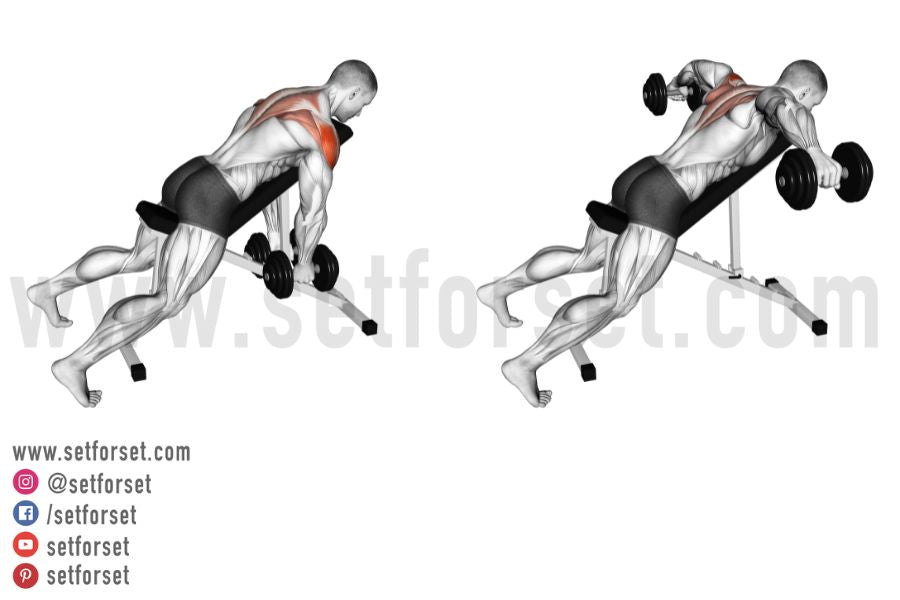
The incline rear delt raise starts low and ends high and, since it uses dumbbells, has a direction of straight down resistance. This implies you are fighting gravity in addition to the load.
Step-by-Step
- Set an incline bench to a 45-degree angle.
- Grab a pair of dumbbells and lie face down on the bench so your arms are hanging over the sting together with your palms facing one another. Plant your feet firmly on the ground and press your lower back into the spine.
- Together with your elbows barely bent, pivot from the shoulder joint to bring your arms back and out.
- Pause for a moment in the highest position as you squeeze the posterior deltoid head.
- Lower under control and repeat.
Bent Over Rear Delt Raise
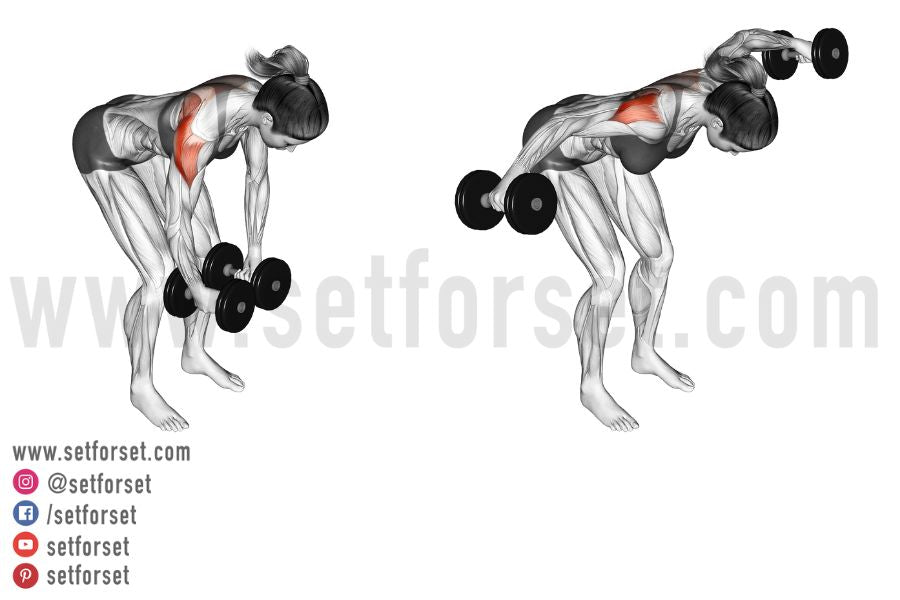
The bent-over rear delt raise is comparable to the previous exercise, with the difference that it doesn’t provide the identical level of protection to your lower back. Nor does it ensure which you could’t use momentum to lift the load.
Nonetheless, the bent-over rear delt raise might be probably the most convenient posterior deltoid exercise. All you’ve gotten to do is grab a pair of dumbbells and begin repping out.
Step-by-Step
- Grab a pair of dumbbells and stand together with your feet shoulder-width apart.
- Bend on the hips so your torso is parallel to the ground.
- Hang your arms in front of you together with your palms facing one another. Your elbows needs to be barely bent but locked in position.
- Pivot from the shoulder joint to bring your arms back and out (relatively than directly as much as shoulder level).
- Lower under control and repeat.
Lying One-Arm Delt Raise
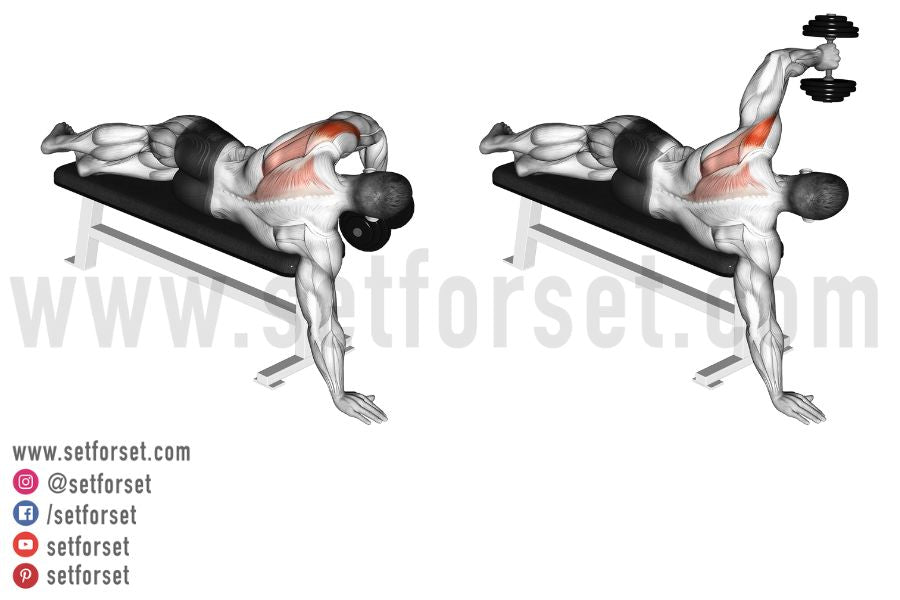
The lying one-arm delt raise does a great job of isolating either side of the rear deltoid muscle. This can be a strict movement that stops momentum.
Step-by-Step
- Lie on a bench in your side together with your legs stacked upon one another and a dumbbell-free weight in your top hand. The opposite hand needs to be supporting your head or body in the event you’re positioned at the highest of the bench.
- Start with the dumbbell prolonged parallel to your shoulder.
- Without bending on the elbow, raise the dumbbell until it points to the ceiling. Bring the load up in a diagonal movement relatively than straight up.
- Slowly lower & repeat.
Advantages of Rear Delt Work
We have talked about how essential it’s for upper-body muscular development to work your rear deltoid muscle. But there’s more to it than that. Listed here are 4 ways in which strengthening your posterior delts will improve your health:
1. Improved Posture
The stronger your rear delts are, the higher able they’re to tug your shoulders back and down. This helps to beat the hunched shoulder look that’s so common today consequently of our screen obsession.
2. Greater Shoulder Stability
Shoulder stability is crucial once you’re performing compound exercises just like the clean and press. The stronger your rear delts are, the more solid your shoulder’s base shall be. That may make you far less more likely to suffer injury when performing those heavy overhead exercises.
3. Balanced Muscle Development
The overemphasis on training the front and side delts and neglecting the muscle’s rear head will lead to muscle imbalances. The disproportionate strength and size between the heads that result make an individual more liable to problems resulting from shoulder instability.
4. Enhanced Functional Movement
Virtually every functional movement of the upper body involves your shoulders. Having strong rear delts which might be evenly developed in relation to the front and side heads will can help you perform those functional movements with greater ease. Whether you are carrying groceries, hauling a suitcase, or using a wheelbarrow, you’ll need greater shoulder strength and endurance to show you how to perform longer with less discomfort.
Rear Deltoid Training FAQ
Why should I train the rear delts individually?
The deltoids are a singular muscle group because each of the three heads has different muscle origin and insertion points. In consequence, each head is in a position to move independently. That signifies that you must do separate rear, lateral and front delt exercises to maneuver each head through its full range of motion.
The range of movement of the front and side delts is different from the rear delts. So, if you end up working your front and side delts, your rear delts are getting a free ride. This a part of the deltoid shall be underdeveloped unless you perform dedicated exercises for the rear delts.
How often should I train my rear delts?
It’s best to train your rear delts, together with the front and side deltoids, a few times per week. Be certain that you permit no less than 48 hours between workouts to make sure the muscle recovers fully from the previous workout.
In the event you are working your shoulders together with one other upper body muscle, hit the opposite muscle first. In the event you work your delts first, you may exhaust them, providing a weak link when training the second body part.
Should I’m going heavy when training my rear delts?
No, you must not use a weight that is simply too heavy when training the rear delts. This relatively small muscle head responds best to a lighter resistance with higher reps. You’ll likely compromise your form in the event you attempt to go too heavy.
It’s best to use a weight in your rear deltoid exercises that can help you train within the 15-30 rep range. I like to recommend using fractional weight plates in your cable weight stack in case your gym has them available.
Can I train my rear delts with body weight exercises?
Body weight exercises aren’t enough to specifically goal the rear deltoid muscles. Nonetheless, there are quite a lot of body weight moves that effectively work the whole deltoid muscle. These include handstand push-ups, shoulder tap push-ups, and inverted rows. I like to recommend investing in a set of resistance bands in the event you have no equipment. It will can help you replicate the rear delt cable fly exercise.
How can I prevent shoulder injuries when training my rear deltoids?
To stop shoulder injuries when performing rear delt exercises, it’s vital that you simply prioritize proper form. Don’t swing or use momentum when doing rear delt exercises. Be certain that that you simply are using a weight that lets you do the movement without compromising your technique.
Wrap Up
The rear deltoid is a muscle head that usually gets missed. In consequence, plenty of persons are walking around with only partially developed shoulders. By including dedicated rear delt exercises in your routine, you may give you the chance to supply fully capped delts with the mass and detail that marks a superior physique.
The three best rear delt exercises are all done on a cable machine, with the perfect of all being the rear delt cable fly. This needs to be your selected posterior deltoid exercise if you’ve gotten access to a double cable pulley machine. If not, select one among the choice exercises I’ve outlined in this text.
Train your rear delts, along together with your front and side delts, a few times per week. I like to recommend performing six sets, with a descending pyramid rep scheme from 30 all the way down to 15 reps. Avoid going too heavy and keep your form strict for the perfect results.






